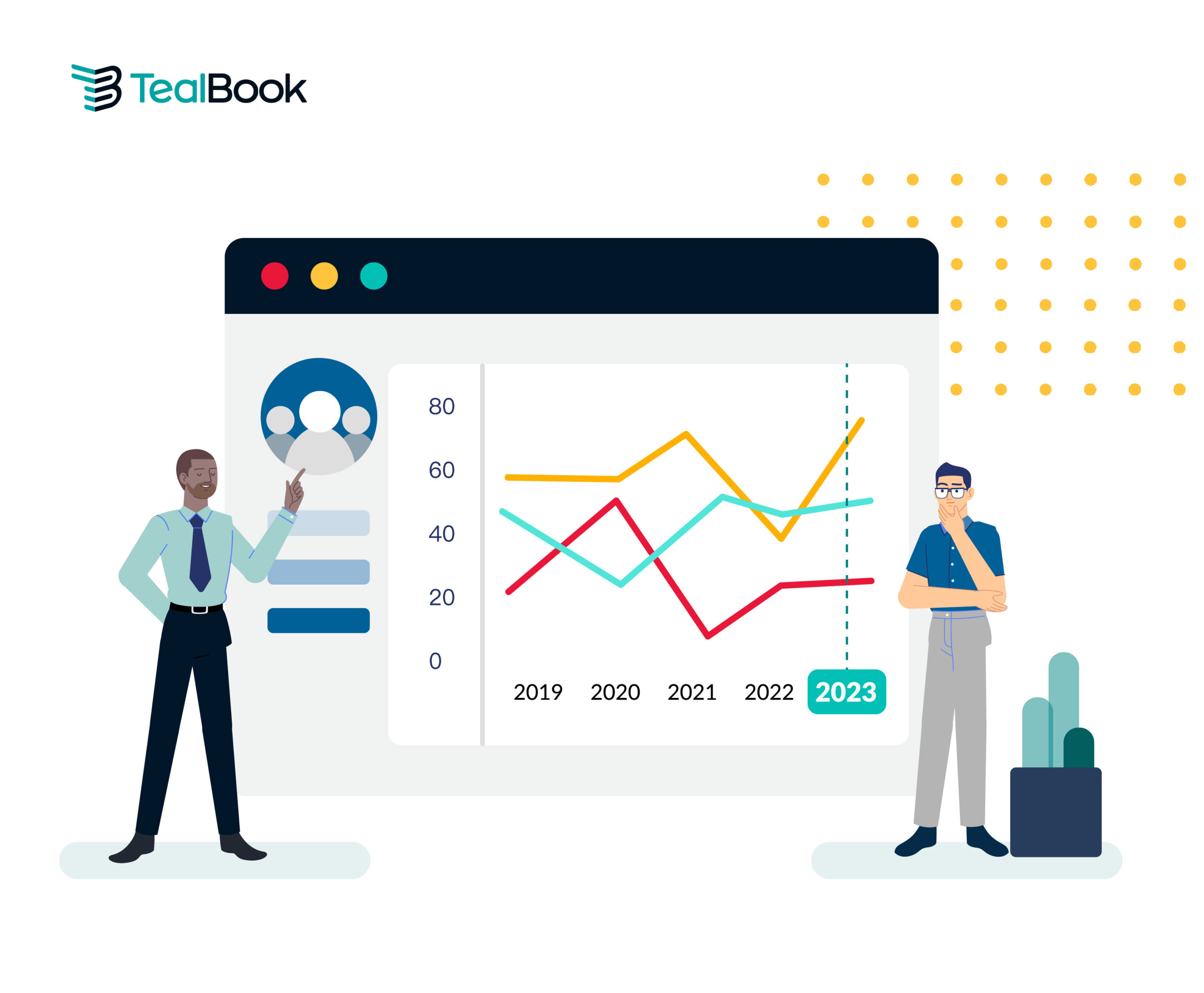As we approach 2023’s conclusion, the state of the supply chain in 2024 becomes a prescient question on the mind of all procurement and sourcing leaders. Supplier diversity has also become a popular talking point as chief procurement officers (CPOs) and other executives seek to establish or revamp their environmental, social and governance (ESG) initiatives. To facilitate that conversation, we’re reviewing the state of supplier diversity today — and where we see the industry going tomorrow.
TealBook has identified the following trends regarding diverse procurement practices in 2023:
1. Cross-organizational support for supplier diversity initiatives is increasing.
Executives are championing supplier diversity more than ever as ESG programs become a high-priority initiative rather than an afterthought. Significant and relevant developments include:
- Google’s commitment to spend $2.5 billion with diverse suppliers in fiscal year 2022.
- Pfizer’s plan to increase diverse supplier spending by 50% by 2025.
- Target’s announcement to commit 10,000 hours of pro-bono consulting services to Black and Indigenous small business owners.
Stakeholders no longer view supplier diversity as a tangential initiative but a core strategic necessity for high-performing organizations. From the C-suite to annual shareholder meetings — conversations about supplier diversity are taking center stage. In fact, many experts now discuss “supplier diversity” in more holistic terms to reflect the strategy’s increasing importance. Global consulting firm Korn Ferry makes the case that “supplier diversity” has become “business diversity,” a top-down approach to ensuring diversity in all aspects of corporate strategy, from decision-making to suppliers and sourcing practices.
2. Supplier diversity objectives are expanding beyond regulatory requirements.
Many organizations initially adopted supplier diversity programs to comply with fledgling regulatory requirements. However, in 2023, supplier diversity objectives expanded beyond these limits to include lofty, self-established guidelines and goals.
This development is reflected by the advancement of diverse spending among the Billion Dollar Roundtable (BDR), a group of high-performing organizations looking to advance supplier diversity. In 2022, BDR members increased their tier-one diverse supplier spending by an impressive 38% to reach $113 billion.
Clearly, organizations recognize the value of — and business case for — diverse supplier spending. Supplier diversity is no longer about compliance; it’s about generating higher demand and creating lasting value and societal impact.
3. Enterprises that prioritize supplier diversity are outperforming the competition.
Recent studies demonstrate a compelling trend: Enterprises prioritizing supplier diversity outperform their competition. According to industry research, the upper quartile of high-performing organizations spends 9% more with diverse tier-one and tier-two suppliers than low performers. And McKinsey research has found that minority- and women-owned business (MWBE) suppliers save their partners 8.5% in cost savings YoY.
Organizations that partner with diverse suppliers benefit in several ways. They increase their ability to pivot during crisis; gain access to new markets and competition; improve their public perception; and, in many cases, reap direct cost savings.
4. Data integrity is becoming increasingly critical for diverse sourcing.
As leaders redouble their investment in supplier diversity, they increasingly identify areas for operational improvement. In 2023, clean and accurate supplier data has become a hot topic as leaders seek solutions facilitating more expedient sourcing practices. According to BDR members, the key to a high-performing supplier diversity program is good internal data — which can be achieved through data-based solutions like a supplier data foundation.
Organizations are investing heavily in data management and verification to ensure their supplier information is accurate, reliable and transparent. These necessities are even more critical when sourcing with small suppliers who may lack access to certain resources. Furthermore, organizations prioritizing good data can track supplier diversity programs more effectively, ensuring accountability and facilitating more informed decision-making.
5. Organizations are starting to measure the impact of supplier diversity programs in novel ways.
Procurement leaders increasingly seek innovative — and more effective — ways to measure the impact of their supplier diversity programs. Traditional metrics like diverse supplier spend are still relevant, but in 2023, they are complemented by other performance indicators. These novel metrics include the number and variety of diverse suppliers, their influence on product development and their impact on market expansion.
This change is likely a response to concerning supplier diversity trends. According to industry research, the largest ten diverse suppliers receive 17% of all diverse spending. When operations source with large suppliers, they often stifle innovation and competition. Consequently, many procurement leaders now opt to source with more diverse suppliers across the board.
What does 2024 have in store for supplier diversity?
All industries are slowly moving toward a more strategic emphasis on supplier diversity. We foresee this trend continuing indefinitely as more leaders recognize the operational benefits of increased supplier diversity and consumers become conscious of their buying power.
As our business world’s collective commitment to supplier diversity deepens, a proper ProcureTech will become more essential than ever. These tools — especially when powered by sophisticated artificial intelligence (AI) and machine learning (ML) — will offer deeper insights into supply chain diversity. Early adopters will be able to proactively identify and mitigate risks associated with subpar diversity benchmarks.
Moreover, as consumers, executives and stakeholders become more conscious of ESG initiatives, downstream diversity reporting will become more critical. More leaders will prioritize supply chain visibility as they attempt to track the spending of their tier-two and tier-three suppliers. As part of this process, we’ll likely see a shift toward more diverse spending initiatives among downstream sourcing leaders.
We have arrived at a promising juncture: More organizations than ever before are taking supplier diversity seriously. The important takeaway is that the future is bright, especially for organizations prioritizing good data and high visibility in their supply chain. Interested in learning how to become one of these high-performing procurement operations? Click here to get started.

